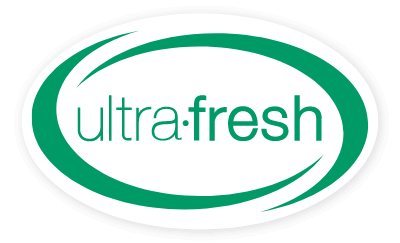Updated February 14, 2019
Being plagued with smelly feet can be personally embarrassing and off-putting to those around you. Even while your feet are sealed inside of your shoes, odors can escape and be present in the room.
Let’s face it: no one wants to be that person.
However, there is an easy solution! By simply upgrading your socks to a pair that has been treated with an antimicrobial you can free yourself of any worry or foul scent!
Antimicrobial socks help prevent the growth of unwanted bacteria in the fabric, ultimately warding off unpleasant odors.
The Problem:
Foul-smelling feet, socks, and shoes.
The Cause:
Bacteria. Believe it or not, sweat is not the root cause of body odour, the real culprit is bacteria.
Bacteria that naturally exists on human skin use the components in sweat as a food source. It's the waste they produce as they grow and multiply that becomes the essence of that stinky smell.
Want to know more about the specific science behind body odor?
Wearing regular shoes and socks can make it increasingly difficult for the sweat on your feet to evaporate. Therefore, the bacteria have more sweat to combine with and a longer period of time to make an impact.
Additionally, increased activity forces feet to sweat at a higher rate, which in turn means bacteria have more opportunities to latch onto sweat and create foul odors.
The Solution: Antimicrobial Socks!
Socks that have been finished with an antimicrobial technology are the fastest and easiest way to solve this issue.
Certain socks have been manufactured with antimicrobial materials which can help prevent the growth of bacteria and, as a result, can aid in the fight against foot odour.
Do Antimicrobial Socks Work to Control Odors?
Yes, they really do!
When you select socks that have been enhanced with antimicrobials, the treated fabric resists the growth of unwanted, odour-causing bacteria.
While your feet will still produce the same amount of sweat, the antimicrobial treatment in the sock fabric prevents the proliferation of bacteria and therefore slows or stops odour-producing growth.
Further down below we discuss how antimicrobial socks are tested to make sure they work.
What is the difference between the terms antibacterial vs antimicrobial?
Why Choose Ultra-Fresh or Silpure to Treat Sock Fabric?
- Applied during normal textile finishing processes
- Compatible with other auxiliaries, such as moisture wicking and cooling features
- All fiber types (natural and synthetic) can be treated
- Works continuously and lasts through multiple washes
- EPA registered, BPR notified and Okeo-tex listed
- We are a bluesign® system partner
Which Antimicrobial Socks Use Ultra-Fresh?
Ultra-Fresh antimicrobial additives have been used to treat billions of socks around the globe!
Many of the top athletic companies use Ultra-Fresh and brand the antibacterial sock treatment under their own name.
Others, such as some of the ones listed below, advertise the Ultra-Fresh brand:
- Puma
- Peacocks UK
- Jockey
- Umbro
- Fresh-Feet
- Happyfoot
- Goldtoe
- Gildan
[caption id="attachment_2505" align="aligncenter" width="500"]

Ultra-Fresh antimicrobial sports socks by Puma
Find out more about the brands we work with.
How are Antimicrobial Socks Tested?
When looking at a newly manufactured fabric, antimicrobial additives can’t be seen, smelled or felt.
In fact, antimicrobial socks look exactly the same as untreated ones. So how are anti odor socks tested to make sure they work?
Many test methods developed by organizations such as the American Association of Textile Chemists and Colorists (AATCC); American Society for Testing and Materials (ASTM); International Organization for Standardization (ISO); and Japanese Industrial Standard (JIS) are available to evaluate bacterial efficacy.
These standardized test methods are often developed for specific types of materials, end-uses or antimicrobial technologies; therefore choosing the correct test method is important.
The most common test method used to assess antimicrobial socks is the ISO 20743 (which is similar to the JIS L 1902). While other methods, such as the AATCC Method 100 and the ASTM E2149, are also used.
Do Antimicrobial Socks Work to Control Microbial Growth?
The photos below demonstrate the benefit of antimicrobial socks.
Two sock samples, one treated with Ultra-Fresh antimicrobial and another without an anti odor sock treatment, were tested using the ISO 20743.
The same amounts of bacteria (Staphylococcus aureus) were added to each sample and then incubated at 37C/98F (body temperature) for 24 hours.
Afterwards, both samples were assessed to determine how many bacteria were remaining.
As seen in the below photos, heavy amounts of bacteria were recovered from the untreated sock sample. In contrast, hardly any bacteria were recovered from the antimicrobial treated sock.
[caption id="attachment_2513" align="alignright" width="300"]

Bacteria recovered from an Ultra-Fresh antimicrobial treated sock
[caption id="attachment_2510" align="alignleft" width="300"]

Bacteria recovered from a sock without an antimicrobial treatment
The graph below demonstrates how antibacterial socks perform over time and after washing. The same number of bacteria were added to an antimicrobial sock, the same sock after 25 home launderings, and also an untreated sock.
The samples were incubated for 24 hours at 98F/37C (body temperature). Afterwards, the number of bacteria remaining were determined.
[caption id="attachment_2719" align="aligncenter" width="1024"]

Do antibacterial socks work? Yes, they do and here is how!
The bacteria on the untreated sock grew exponentially (from about 50,000 to over 400,000!).
However, the Ultra-Fresh treated antimicrobial socks, had 99.9% fewer bacteria as compared to the untreated sock after the same time period - even after 25 washes!
Therefore, the conclusion is very simple: fewer bacteria = less unwanted, embarrassing odor.
Want to learn more about how antimicrobials in fabric work?
More Interesting Blog Articles:
- Antimicrobial Agents: What are They?
- An Introduction to Microorganisms
- Antimicrobial Treatments for Sports Equipment
- More...
Learn more about us or contact us for more information.
